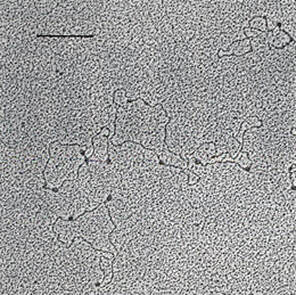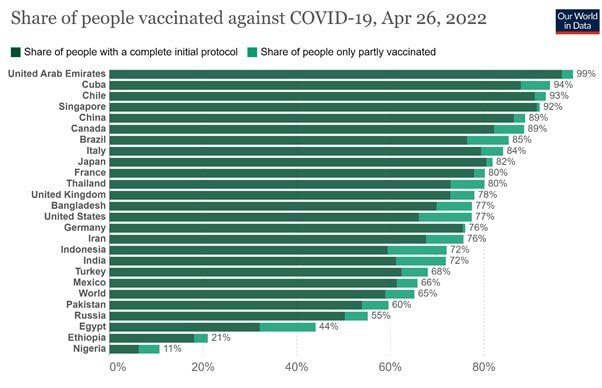|
John writes … I started to write this blog post on April 25th which is a very significant date in the history of molecular biology. On April 25th 1953, the prestigious journal Nature published the paper that announced the elucidation of the double helical structure of DNA. ‘Landmark’ is a rather over-used term but this was certainly one. Like any major discovery it led to a flurry of further experimental work. In this case, the structure gave some clear clues about the biochemical mechanisms involved in replication of DNA and in the working of genes. Understanding the biochemistry then led to research on the way in which different living organisms control that biochemistry throughout the different phases of their life, research which continues to this day.  Fred Sanger, University of Cambridge, inventor of the ‘chain-termination’ DNA sequencing technique. (Credit: public domain) Fred Sanger, University of Cambridge, inventor of the ‘chain-termination’ DNA sequencing technique. (Credit: public domain) In our February vlog I talked about the Golden Age of Genetics; the discovery of DNA structure and the subsequent biochemical research were part of the prelude to that golden age, as was the decoding of the genetic code in the early 1960s. But what actually initiated the golden age was the invention of genetic modification (GM) techniques – genetic engineering (GE) – in the early 1970s, an invention that could not have happened without the biochemical and genetic research of the previous decade. Genetic modification techniques enabled scientists to study individual genes. Combination of biochemical knowledge with possibilities raised by GE techniques led to the development of methods for sequencing DNA. The first full DNA sequence, that of a bacteriophage (a virus that infects bacteria) and consisting of 5365 base pairs (DNA ‘building blocks’) was published in 1977. The golden age was underway.  Electron micrograph showing a protein binding to structural features in small circular DNA molecules that were constructed using GE techniques (see first link in reference ( 2)). Picture © Sara Burton, Jack Van’t Hof, John Bryant. Electron micrograph showing a protein binding to structural features in small circular DNA molecules that were constructed using GE techniques (see first link in reference ( 2)). Picture © Sara Burton, Jack Van’t Hof, John Bryant. The developments that I have just described took place early in my career and without a doubt have enabled me and my colleagues to carry out research that previously would not have been possible. Some of our work certainly employed more conventional biochemical techniques (1) but a significant proportion was only possible because we were able to use GE and related methods in our studies of regulatory mechanisms (2). I feel immensely privileged to have contributed in a minor way to the golden age and have also been thrilled in making discoveries that give me insights into the awesome beauty and cleverness of the regulatory mechanisms that operate in living cells The progress that has been made in our understanding of how genes work has certainly been amazing. Thinking back to the start of my career, I would not even have imagined the possibility of knowing some of the things that are now embedded in our understanding of molecular biology. That leads to another of my ‘pet themes’. I am all for original research with ‘no strings attached’ because I believe that is a good thing to know and understand more about the universe in which we have been placed. Further, for me as a Christian, it gives more insight in the work of our creator God. However, I also want to see the findings of science used, where possible, for the good of humankind and indeed of the whole planet. In our February vlog I mentioned several medical applications of our current understanding of DNA and genetics. One example is the development of vaccines for COVID-19 which depends on knowledge of virus genes and, for the Astra-Zeneca vaccine, also on GE techniques. Other examples included rapid genome sequencing to identify gene-based diseases and the use of genome editing (which is in effect another type of GE) to make pig organs suitable for transplant into humans. These are undoubtedly sophisticated applications of our knowledge but they raise questions about world-wide availability, questions about which I have serious concerns. Taking the first example, the development of vaccines, in the UK many people have had three doses of COVID-19 vaccine while some have had a fourth. And yet in many of the poorer countries of the world, fewer than 20% of the population have received any vaccine and even if they been vaccinated, they have had only one dose. In the chart, this situation is illustrated by data from Nigeria and Ethiopia. I do not have the space here to comment much further on this, except to say that it seems very wrong and surely there must be some way of addressing such glaring inequality. The other topic mentioned briefly above, on which I want to comment further, is genome sequencing. It is undeniably useful in diagnosis of genetic diseases and in prediction of some possible future health-care needs. However, as with vaccine availability, this is medical technology of the rich industrialised nations of the world and we should not let it, wonderful though it is, blind our eyes to the still widespread occurrence of malaria, TB, HIV, childhood dysentery and so on. These diseases account for many more deaths than can be attributed directly to genetic mutations. Further, even in developed countries it is possible that the wonders of genetic medicine may lead us to take our eyes off the ball with respect other factors that affect our health. An anonymous GP said that for most people, the postal code of where they live gives a better picture of their health than their genome sequence. What did she/he mean? Poverty, poor housing, poor social and physical environments, less access to facilities and so on can all have dramatic effects on our health. In and around all our major cities in the UK, there are huge differences in life expectancy between people living in the most affluent areas and people living in the poorest areas; for example in Glasgow in 2021, the difference between the two extremes was nearly 20%. Amongst the significant factors contributing to these inequalities are differences in air quality. A recent article in New Scientist (3) looked at the effect of environmental pollution on health, including resistance to and recovery from diseases, reaching the conclusion that ‘For most diseases, exposure to pollution plays a far greater part in mortality than genetics.’ So, although I am thrilled to be living in the ‘Golden Age of Genetics’ I am also motivated to apply the imperative to love our neighbour as ourselves in dealing with inequalities, whether internationally or within our own country so that all may benefit from advances in biomedical science. John Bryant Topsham, Devon April 2022 (1) Bryant, Fitchett, Hughes, Sibson, doi.org/10.1093/JXB%2F43.1.31
(2) Burton, Van’t Hof, Bryant, doi.org/10.1046/j.1365-313X.1997.12020357.x ; Dambrauskas et al., doi.org/10.1093/jxb/erg079 (3) Lawton, New Scientist, 29 Jan 2022, pp 44-47.
0 Comments
Leave a Reply. |
AuthorsJohn Bryant and Graham Swinerd comment on biology, physics and faith. Archives
July 2024
Categories |



 RSS Feed
RSS Feed
